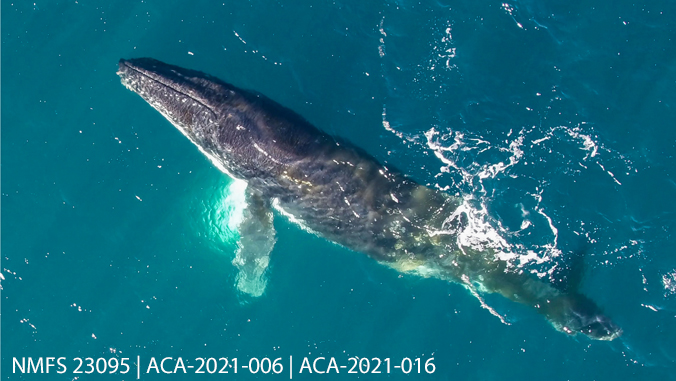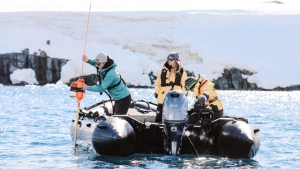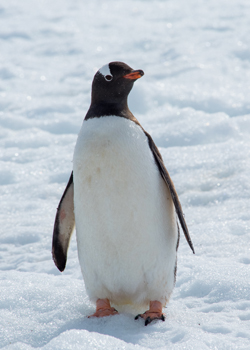
In one of the harshest environments on the planet, a master’s candidate in the Marine Biology Graduate Program at the University of Hawaiʻi at Mānoa spent 18 days in Antarctica as the drone pilot on a California Ocean Alliance research team measuring whales to collect information on their body conditions and behaviors.
The team of three researchers included Liah McPherson, who operated a DJI Inspire 2 drone; Chloe Lew, an acoustician with California Ocean Alliance; and Kiirsten Flynn, a research biologist with Cascadia Research Collective.

Researchers collected data on 34 groups of whales, measured 18 individuals, and collected 11 biopsy samples. For each whale, they aimed to obtain three types of data: photo identification images, a biopsy sample, and a drone-based body condition measurement.
“Working on this project in Antarctica undoubtedly made me a better scientist,” said McPherson, who is part of the Marine Mammal Research Program (MMRP) at the Hawaiʻi Institute of Marine Biology. “The conditions were some of the most difficult I’ve ever worked in, and I know that coming out of it, I am a better drone pilot. I also learned to collect biopsy samples from whales, a skill that will be useful for data collection in Hawaiʻi and beyond. I can take back the skills I acquired in Antarctica and apply them to aid research efforts for the conservation of marine mammals in Hawaiʻi.”
Next generation of scientists
The work that McPherson contributed to has a large focus on humpback whales, which seasonally feed on krill in Antarctic waters. This species is also found in the Hawaiian Islands each year during their breeding period in the winter months. While the whales in the Northern and Southern Pacific are separate populations, understanding the health of one can provide valuable insight to the other.
“Training the current and next generation of graduate students, ocean protectors, educators, and conservationists is critical because this is who we are leaving our planet to and in their stewardship,” said Ari Friedlaender, principal investigator of the Antarctica expedition and co-founder of California Ocean Alliance. “We are in an age where new tools and technology are emerging all the time and providing opportunities for smart, eager and creative young students can help us find new ways to study our planet and develop better ways to protect it. I am thrilled for Liah and for how well she has done and look forward to working with her more in the future.”

On a good weather day, researchers searched for whales for four to five hours. Lew deployed a hydrophone to record the Antarctic soundscape. McPherson launched the drone and navigated it above each whale, communicating its behavior to her colleagues and measuring its body condition.
Researchers also collected biopsy samples and photographed each whale’s tail fluke to identify the individuals. Linking these types of data can provide information about the health of both individual whales and the larger population.
“Another awesome aspect of this trip was that we were a three-woman team,” said McPherson. “I think there’s still bias in academia, so it felt great to be part of a skilled team of women—operating boats, drones and crossbows. Working in Antarctica was one of the most valuable and incredible experiences of my life, and something I never dreamed I’d be able to do. I can’t express enough gratitude to Ari Friedlaender and California Ocean Alliance for inviting me to participate in this research effort.”
This opportunity is an example of UH Mānoa’s goal of Enhancing Student Success (PDF) and Excellence in Research: Advancing the Research and Creative Work Enterprise (PDF), two of four goals identified in the 2015–25 Strategic Plan (PDF), updated in December 2020.
For more information, see the MMRP website.

